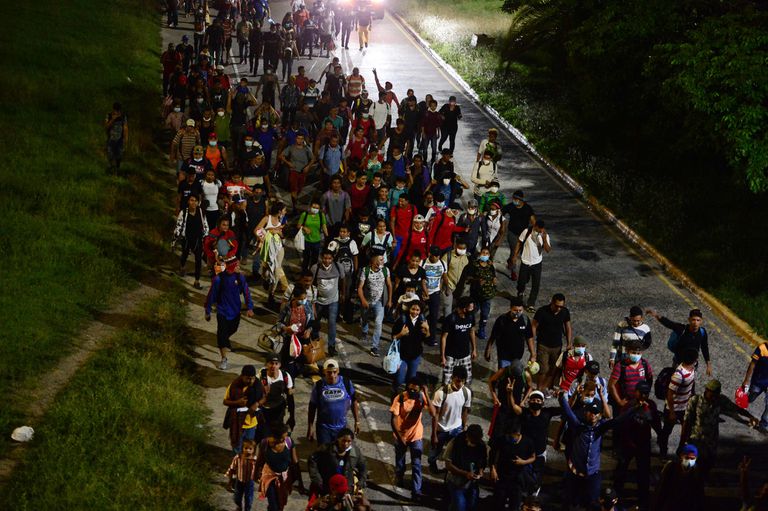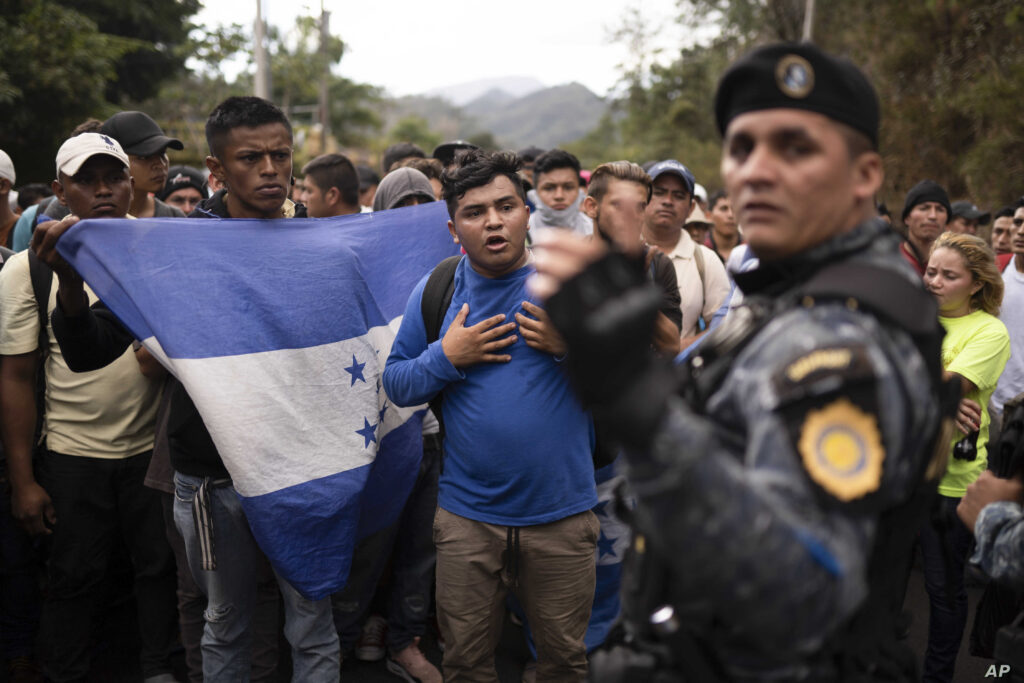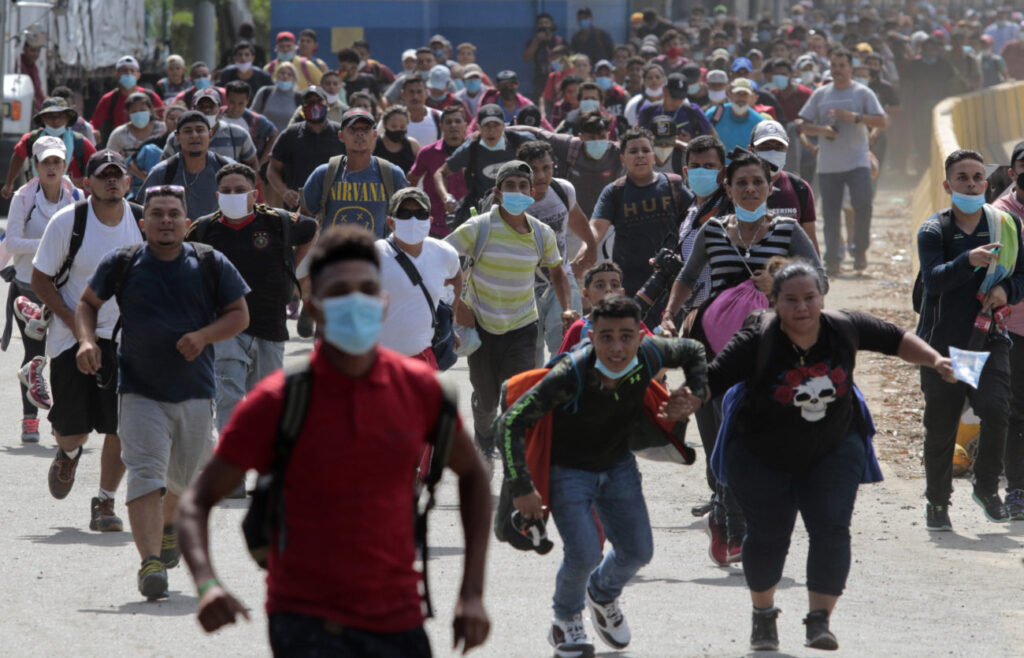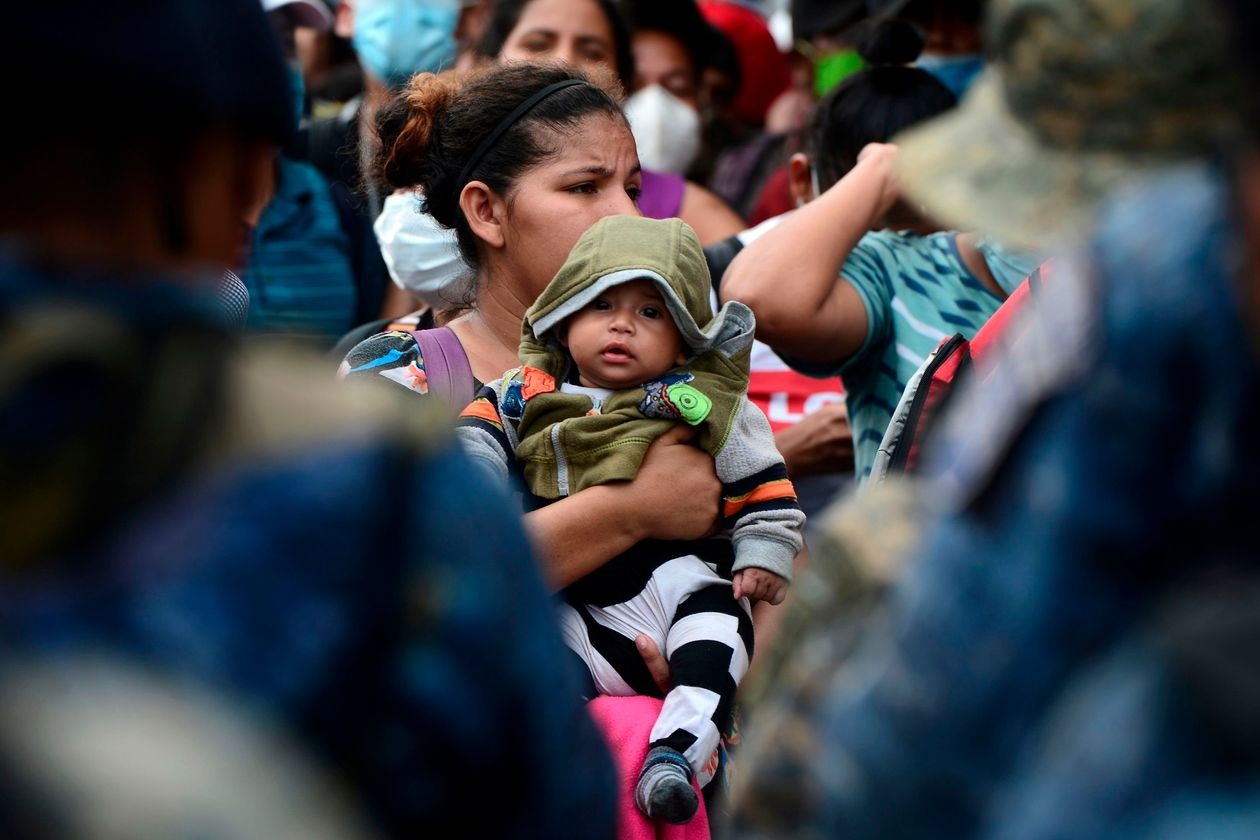The caravan could provide ammunition to President Trump’s re-election campaign, but experts say it will likely be broken up.
MEXICO CITY A group of about 3,000 Honduran migrants, including many women and children, overwhelmed soldiers and police as they crossed into Guatemala on Thursday, heading toward the U.S. southern border to flee poverty and rising joblessness brought by the pandemic.
With the U.S. presidential election a little more than a month away, the new caravan could provide ammunition to President Trump’s campaign. Mr. Trump’s stand against illegal immigration has been one of his policy priorities.

Migration experts say it is likely the caravan would be broken up, and few migrants would reach the U.S. border with Mexico.
Mexico’s government has stepped up law enforcement against irregular migration at the request of Mr. Trump. Earlier this year, Mexico detained and deported more than 2,000 migrants from another caravan that sought to reach the U.S. border. On Thursday, Mexico’s immigration agency warned that it would arrest any person trying to enter Mexico irregularly given the coronavirus pandemic.

In an evening press conference, Guatemalan President Alejandro Giammattei, who is recovering from Covid-19, said he had ordered that the Honduran migrants who had entered Guatemala be detained and returned to Honduras. He urged Honduran authorities to stop the flow of migrants who by entering the country were violating immigration and health norms and putting the health of Guatemalans at risk. Mr. Giammattei decreed a 15-day “state of prevention” in six of the country’s 22 departments, most of them along the Honduran border. That measure allows the government to, among other things, limit and dissolve public gatherings, impose censorship and militarize public services.
Since 2018, at least seven caravans have left from Honduras and El Salvador, largely disintegrating before reaching the Mexican side of the U.S. border, leaving thousands of migrants stranded in shelters and hastily erected camps. While the groups capture public attention across the region, the caravans represent just a fraction of the hundreds of thousands of migrants seeking to enter the U.S. each year.
During the final weeks of the 2018 U.S. midterm campaign, Mr. Trump’s attempt to use caravans to mobilize his supporters flopped and the Democrats gained control of the House of Representatives.

On Thursday, migrants, many of them women holding children, shouted, “Yes we can, yes we can,” as they burst through a line of Guatemalan police and soldiers dressed in camouflage, video released by local media and the Guatemalan migration ministry showed.
After the women and children broke through the police line, hundreds of other migrants, most of them young men, ran across the border into Guatemala.
One migrant wearing a face mask and a blue T-shirt said he and his family had been pushed to migrate by rising poverty and lack of jobs in Honduras, one of the poorest countries in the Western Hemisphere. “There are no jobs,” he said. “We are poor. We have nothing.”
“All of Honduras has left,” a woman said on a video posted by the Guatemalan immigration ministry.
The caravan left from San Pedro Sula, Honduras’s most violent city, the departure point for most of the previous caravans. Another group is organizing at the border with Guatemala, some 65 miles away from San Pedro Sula.
“There are entire families, many women, and children,” said Gerardo Chévez, a reporter with local radio station Radio Progreso who is at the border with Guatemala. “It’s 90 degrees, these people are desperate and the Guatemalan police couldn’t do anything to stop them.”
The migrants are expected to reunite at the Guatemalan side of the Mexican border in the coming hours. There, immigration advocates and government officials said, they likely will be stopped and detained by Mexican migration authorities if they try to cross into Mexico.

“The final destiny of all these people is the Mexican border. They will disperse in different smaller groups and will be chased by Mexican immigration,” said Bartolo Fuentes, an Honduran leftist activist who promoted the first migrant caravan in 2018.
Mr. Fuentes, who is under investigation for human trafficking in Honduras, said he hasn’t been involved in Thursday’s caravan. Most migrants aren’t aware of the proximity of the U.S. election and the potential implications of the new caravan, he added.
As with previous groups, the caravan was organized and promoted through social-media networks and WhatsApp groups in Honduras. A Facebook page called “Migrant caravan October 1st 2020” was created on Sept. 18 by a user named Rodríguez Nany. The page has more than 700 members.
“Please, don’t forget to bring with you your masks and hand-sanitizing gel,” read a message posted five days ago.
Central American migrants traveling in caravans are seeking safety in numbers from criminal gangs and corrupt police. They also save money because they don’t have to pay human smugglers, and gain media attention to raise awareness of the migrants’ troubles.
But the movement had dramatically slowed since countries shut their borders in March in response to coronavirus. Guatemala reopened its borders Sept. 18.
The coronavirus pandemic has hit Honduras hard, killing some 2,400 people. There are also more 76,900 confirmed cases in the Central American nation. Human-rights groups have warned hunger and poverty will intensify as a consequence of the pandemic, fueling migration in the coming months.
“We are in search of opportunities. We just want to work and support our families,” Fermín Madrid, a migrant who was traveling with 15 family members, told Radio Progreso.

COMMENTS